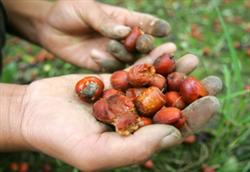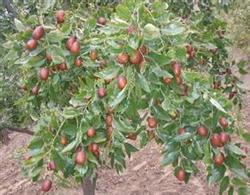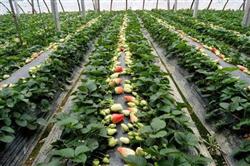Renewal techniques of old jujube trees

For the renewal of the old jujube tree, the long and thin branches should be rejuvenated; the dry and withered branches and thin branches that have no use value should be removed; the old wounds or stumps of broken branches should be trimmed with stubble and coated with protective agent. Specific pruning varies from tree to tree. 1. If there are no secondary backbone branches available in the middle and lower parts of the large branches, two layers of main branches are selected according to the sparse layer shape or 4 to 5 main branches are selected according to the round head shape, and each branch is retracted from 2 × 3 to 1 × 2. If there is no branch under the saw, a upright or oblique jujube should be left, and a short cut at the base of the jujube should be selected as a pruning branch. Second, if the old branch is not too bald, it is best to retain the two-level backbone branches of the main branch and the lateral branch, and then retract the main and lateral branches according to the above method. Third, the big branches and trunks are damaged and cannot be used, but the big branches with good roots can be sawed off from the flat ground to make them sprout. It can grow to more than 1.5 meters in that year, which is faster than replanting young trees. Remove its sprouting in summer, leave one or two sprouting tillers temporarily, speed up wound healing, and cultivate soil to protect it from breaking or damage. No matter which method is adopted for the renewal of old trees, the management of soil, fertilizer and water should be strengthened.
- Prev

Promoting High Yield of Jujube Tree by Proper Fertilization
Only scientific and rational fertilization of jujube trees can strengthen tree vigor, improve pest resistance, improve quality and increase yield. Fertilization of jujube tree is divided into basal fertilizer and topdressing. The scientific application period of base fertilizer is from the mature period of jujube fruit to the soil thawing in the following year, and the topdressing is divided into three stages: the early stage of bud, the early stage of full flower and the rapid expansion period of fruit.
- Next

Harm and Control techniques of continuous cropping of Strawberry in greenhouse
1. The harm of continuous cropping of strawberries in greenhouse 1.1 leads to the long-term accumulation of pathogenic microorganisms and continuous planting of strawberries on the same plot, which will cause obvious changes in the microbial community in the soil, and suddenly nematodes and pathogens multiply in large numbers, resulting in the occurrence of diseases and insect pests. 1.2 lead to the loss of strawberry nutrient balance.
Related
- Moge, come on! The staff of the peasant association in the producing area of cantaloupe were frightened when the crowd gathered.
- Causes and Solutions of low Fruit setting rate of Apple
- Symptoms and control measures of passion fruit virus disease
- Fruit growing lesson: how do apple orchards keep high yields?
- Can you build orchards in the mountains? What are the pros and cons?
- How to manage the coloring period of Crisson grape?
- This paper introduces the processing technology of two kinds of fig products.
- How much is a month for retired teachers in rural areas by 2020?
- How can strawberry planting increase sugar content? We should pay attention to management in many aspects.
- What are the cultivation techniques on how to improve the yield of golden fruit?

